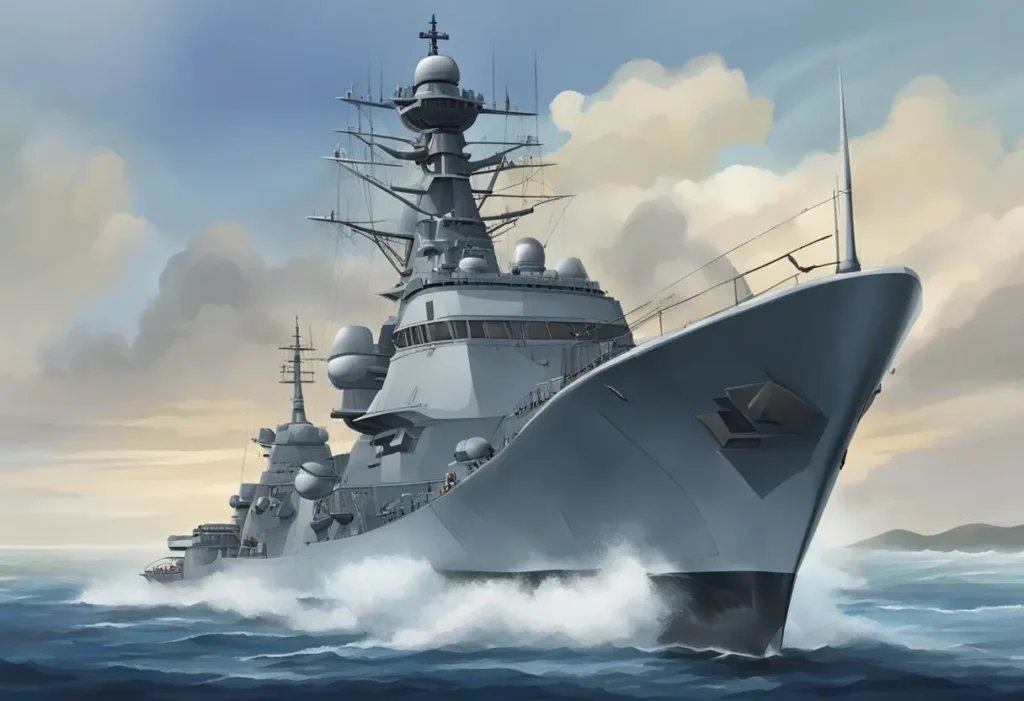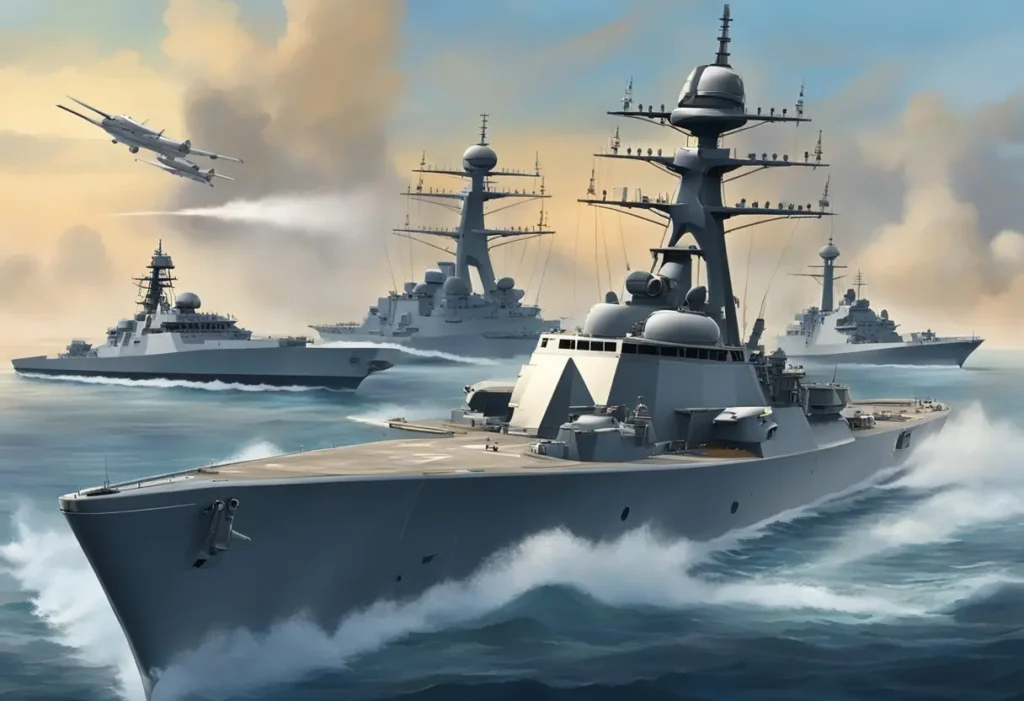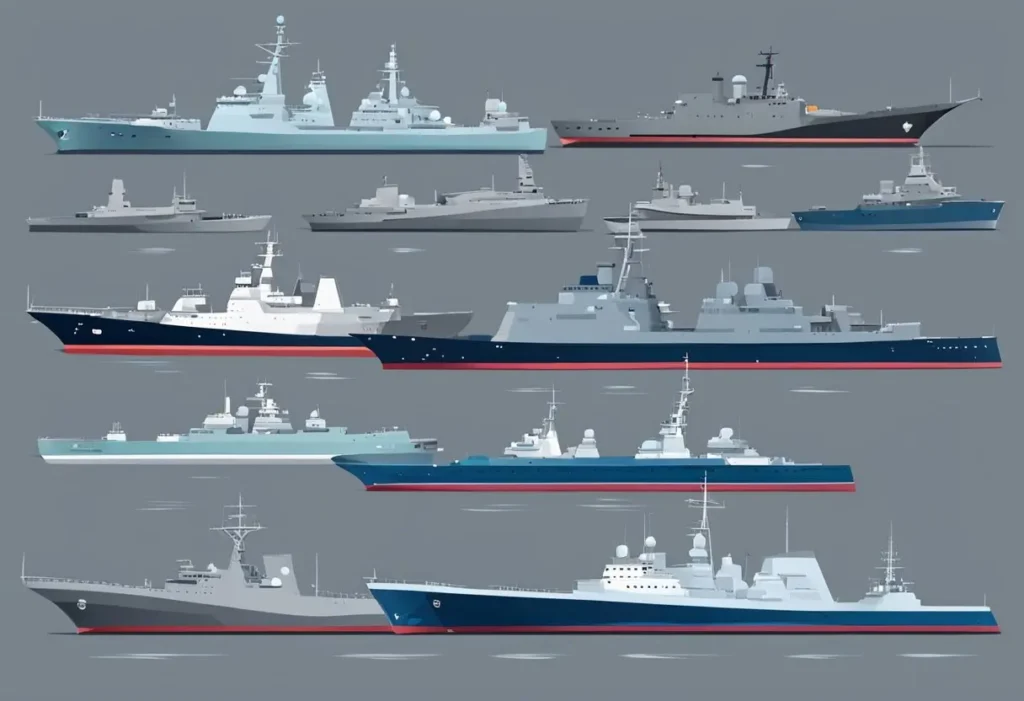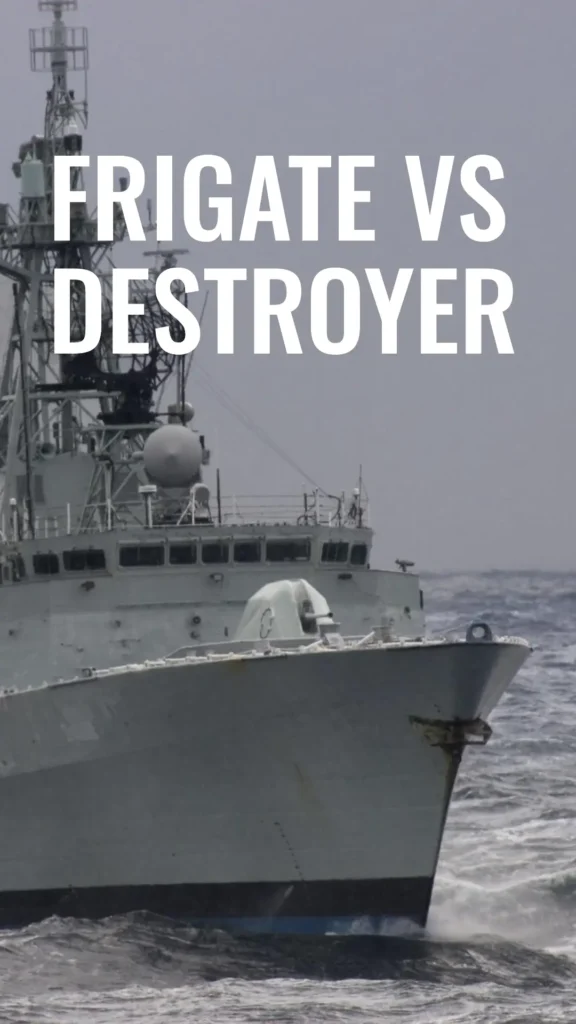Frigates and destroyers are two types of warships that are commonly used in naval operations.
While these two types of warships may seem similar at first glance, there are a number of key differences between frigate and destroyer that are important to understand.
In this article, we will explore what sets frigates and destroyers apart from one another and examine their respective roles and capabilities.

Frigates and destroyers are both designed to operate in a variety of environments, including open seas, coastal waters, and even rivers. However, frigates are generally smaller and less heavily armed than destroyers, which are often considered the workhorses of modern navies.
Despite their smaller size, frigates are still capable of performing a wide range of tasks, including anti-submarine warfare, surface warfare, and maritime security operations.
One of the main differences between frigates and destroyers is their design and capabilities. Frigates are typically built for speed and maneuverability, while destroyers are designed to be heavily armed and heavily armored.
Additionally, frigates are often equipped with advanced sensors and communications systems that allow them to operate effectively in a variety of environments, while destroyers are often equipped with advanced weapons systems that allow them to engage targets at long range.
Despite these differences, both frigates and destroyers are critical components of modern naval forces and play an important role in ensuring the safety and security of the world’s oceans.
- Frigates and destroyers are two types of warships that are commonly used in naval operations.
- Frigates are generally smaller and less heavily armed than destroyers, and are designed for speed and maneuverability.
- Despite their differences in design and capabilities, both frigates and destroyers are critical components of modern naval forces.
Frigate VS Destroyer
Frigates and destroyers are two types of warships that have distinct differences in their design, purpose, and capabilities. While both ships are designed for combat and naval operations, they have different roles and functions in the modern navy.
History
The frigate has a long history dating back to the 19th century when it was first introduced as a full-rigged ship. It was designed to be fast and agile, with enough firepower to engage in naval warfare. The frigate was used for a variety of missions, including escorting merchant ships, patrolling coastlines, and engaging in naval battles.
The destroyer, on the other hand, was introduced in the early 20th century as a response to the changing nature of naval warfare. It was designed to be faster, more maneuverable, and more heavily armed than the frigate, with a focus on anti-submarine warfare.
Design
Frigates are typically smaller and less heavily armed than destroyers. They are designed to be fast and agile, with a focus on anti-submarine warfare, surface warfare, and escort missions. Frigates are also equipped with a variety of sensors and communication systems that allow them to detect and track enemy ships and submarines.
Destroyers, on the other hand, are larger and more heavily armed than frigates. They are designed to be fast, maneuverable, and capable of engaging in direct combat with enemy ships. Destroyers are equipped with a variety of weapons systems, including guns, missiles, torpedoes, and anti-aircraft systems, that allow them to engage in a wide range of naval operations.
In the US Navy, frigates were phased out in the late 20th century and replaced with the more versatile and capable Arleigh Burke-class destroyers. These ships are designed to be multi-mission platforms that can engage in a wide range of naval operations, including anti-submarine warfare, air defense, and surface warfare.
Roles and Purposes
Frigates and destroyers are two different types of warships that serve different roles and purposes in naval warfare. In general, frigates are designed to fulfill defensive roles, while destroyers are designed to fulfill offensive roles.
Combat and Defence Roles
Destroyers are primarily designed for direct combat with enemy forces. They are equipped with advanced weapons systems and are capable of engaging in anti-submarine warfare, air defense, and surface warfare. Destroyers are also used for offensive operations, such as attacking enemy ships and providing fire support for ground troops.
On the other hand, frigates are primarily designed for defensive roles. They are equipped with weapons systems that are designed to protect friendly vessels from enemy attacks. Frigates are often used for convoy escort missions, patrolling, and protecting naval bases.
Peacetime and Patrol Duties
During peacetime, frigates are often used for patrolling and maintaining security in territorial waters. They are also used for anti-piracy operations and drug interdiction missions. Frigates are also used for search and rescue operations and disaster relief efforts.
Destroyers, on the other hand, are used for peacetime operations such as training exercises and diplomatic missions. They are also used for patrolling and maintaining security in international waters.
In summary, frigates and destroyers serve different roles and purposes in naval warfare. Frigates are primarily designed for defensive roles, while destroyers are primarily designed for offensive roles. During peacetime, frigates are often used for patrolling and maintaining security in territorial waters, while destroyers are used for training exercises and diplomatic missions.
Design and Capabilities

Frigates and destroyers are both warships designed for combat, but they have different designs and capabilities. This section will discuss the differences in speed and maneuverability, armaments and firepower, and size and weight.
Speed and Maneuverability
Frigates are generally faster and more nimble than destroyers due to their smaller size and lighter weight. They are designed for speed and maneuverability, making them ideal for escort missions and anti-submarine warfare. Frigates can travel at a top speed of up to 32 knots, while destroyers typically have a top speed of around 30 knots.
Armaments and Firepower
Destroyers are heavier and carry more armaments than frigates. They are designed for direct combat and have a greater range of weapons, including guided missiles, torpedoes, and guns. Destroyers also have more sophisticated sensors and communication systems. In contrast, frigates have a smaller armament and firepower, but they are still capable of engaging in combat. They typically carry cruise missiles, guns, and torpedoes.
Size and Weight
Destroyers are larger and heavier than frigates. They typically weigh between 8,000 to 10,000 tons, while frigates weigh around 4,000 tons. The difference in size and weight is due to the fact that destroyers are built to carry heavier weapons and armor, while frigates are designed for greater speed and maneuverability.
In summary, the main differences between frigates and destroyers are their design and capabilities. Frigates are faster and more maneuverable, while destroyers are larger and carry more armaments. Both warships play an important role in naval operations and are designed to meet specific mission requirements.
Variations by Nations

Different nations have different definitions and ideas about what a frigate or destroyer should do. Here are some variations by nations:
United States
In the United States, frigates are no longer in service. The U.S. Navy currently only operates destroyers, which are multi-mission surface combatants. The Arleigh Burke-class destroyer is the primary destroyer class in the U.S. Navy, with over 60 currently in service.
European navies use the terms frigate and destroyer interchangeably.
The Royal Navy of the United Kingdom operates both frigates and destroyers, with the Type 23 frigate and Type 45 destroyer being the primary classes.
The Spanish Navy also operates both classes of ships, with the Álvaro de Bazán-class frigate and the F100-class frigate being the primary frigate classes, and the Álvaro de Bazán-class destroyer being the primary destroyer class.
The German Navy operates only frigates, with the Sachsen-class frigate being the primary class.
In Asia, the People’s Liberation Army Navy of China operates both frigates and destroyers, with the Type 054A frigate and Type 052D destroyer being the primary classes.
The Republic of China (Taiwan) Navy also operates both classes of ships, with the Cheng Kung-class frigate and the Kee Lung-class destroyer being the primary classes.
The Russian Navy operates both classes of ships, with the Admiral Gorshkov-class frigate and the Admiral Grigorovich-class destroyer being the primary classes. The Islamic Republic of Iran Navy operates only frigates, with the Jamaran-class frigate being the primary class.
It is important to note that these are just some examples and not an exhaustive list. Each navy has its own unique requirements and capabilities, which can influence the types of ships they operate.
Modern Developments and Comparisons
Modern navies have shifted their focus towards multi-mission capable vessels that can operate in various environments, including littoral combat. The difference between frigates and destroyers has become less defined as navies have developed new types of naval vessels, such as the corvette.
Naval vessels are now designed to be more agile and versatile, with a greater emphasis on speed and maneuverability. The auxiliary component of a carrier battle group, for example, may include a littoral combat ship that can operate in shallow waters and carry out a range of missions, from anti-submarine warfare to mine countermeasures.
Sonar equipment has also become more advanced, allowing for more effective detection and tracking of submarines. This has led to the development of new combatants, such as the Type 31 frigate, which is equipped with vertical launch missile systems and advanced sonar capabilities.
In terms of size, destroyers are generally larger than frigates and have more firepower. However, the line between the two types of vessels has become increasingly blurred, with some frigates being equipped with similar weaponry to destroyers.
Overall, the distinction between frigates and destroyers is becoming less relevant as navies focus on developing multi-mission capable vessels that can operate in a range of environments. The development of new technologies and equipment is also contributing to the blurring of the line between the two types of vessels.

- Sustainable and Luxurious: Discovering Split’s Yachting Paradise – April 26, 2024
- MarineTraffic vs VesselFinder: Which Is Better Vessel Tracking Service? – February 14, 2024
- Port Costs: A Comprehensive Guide to Port Dues and Fees for Cargo Ships – February 12, 2024






Leave a Reply